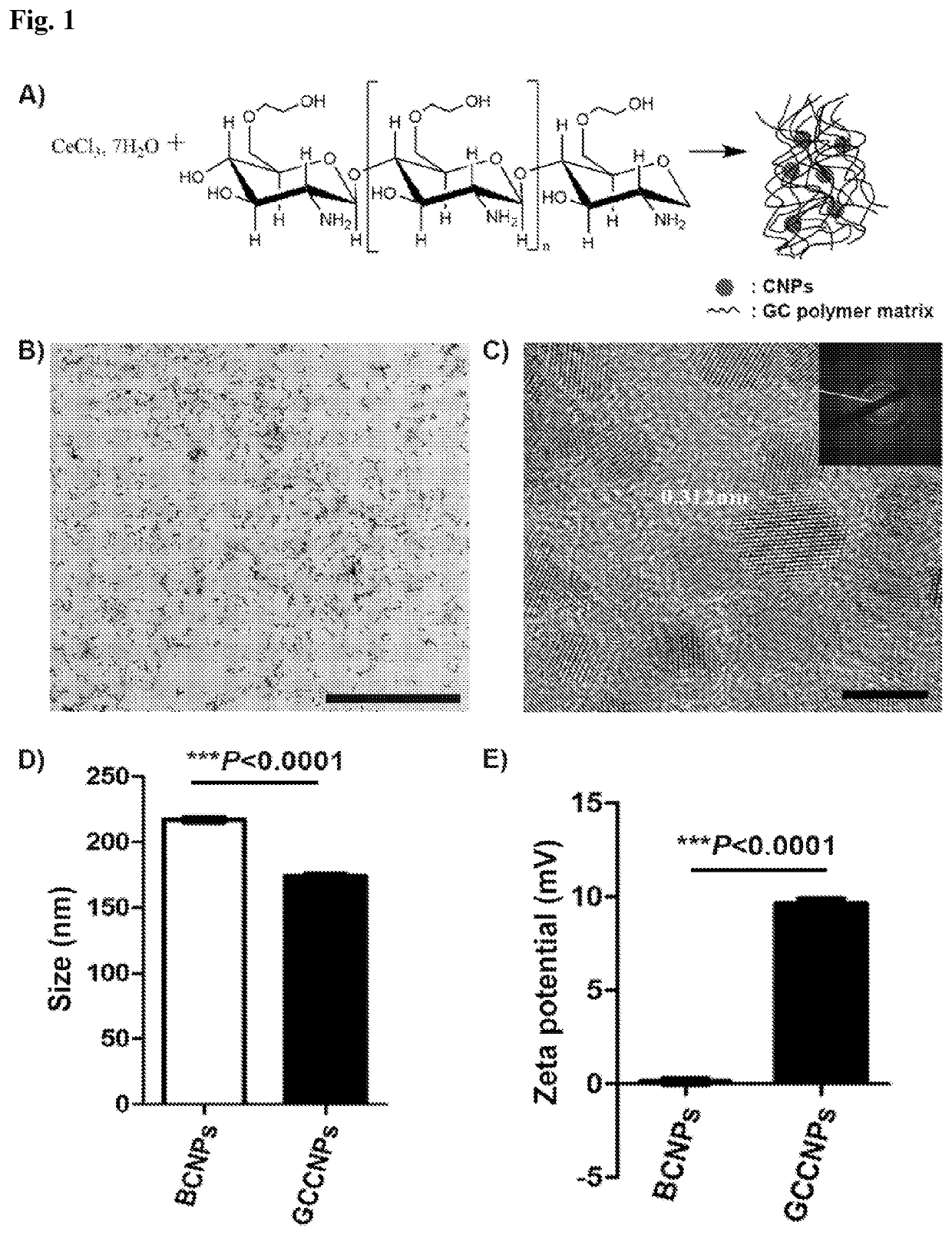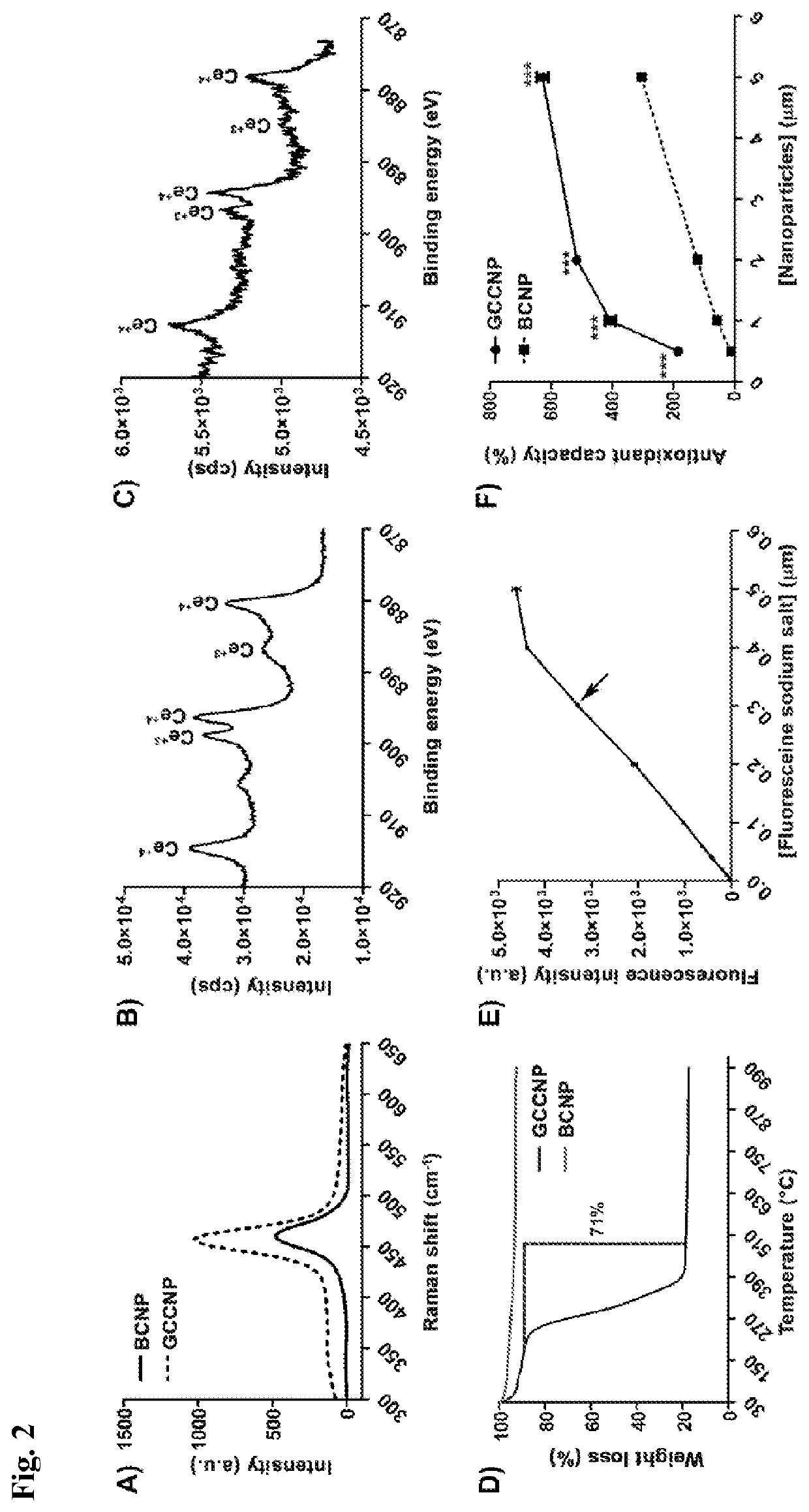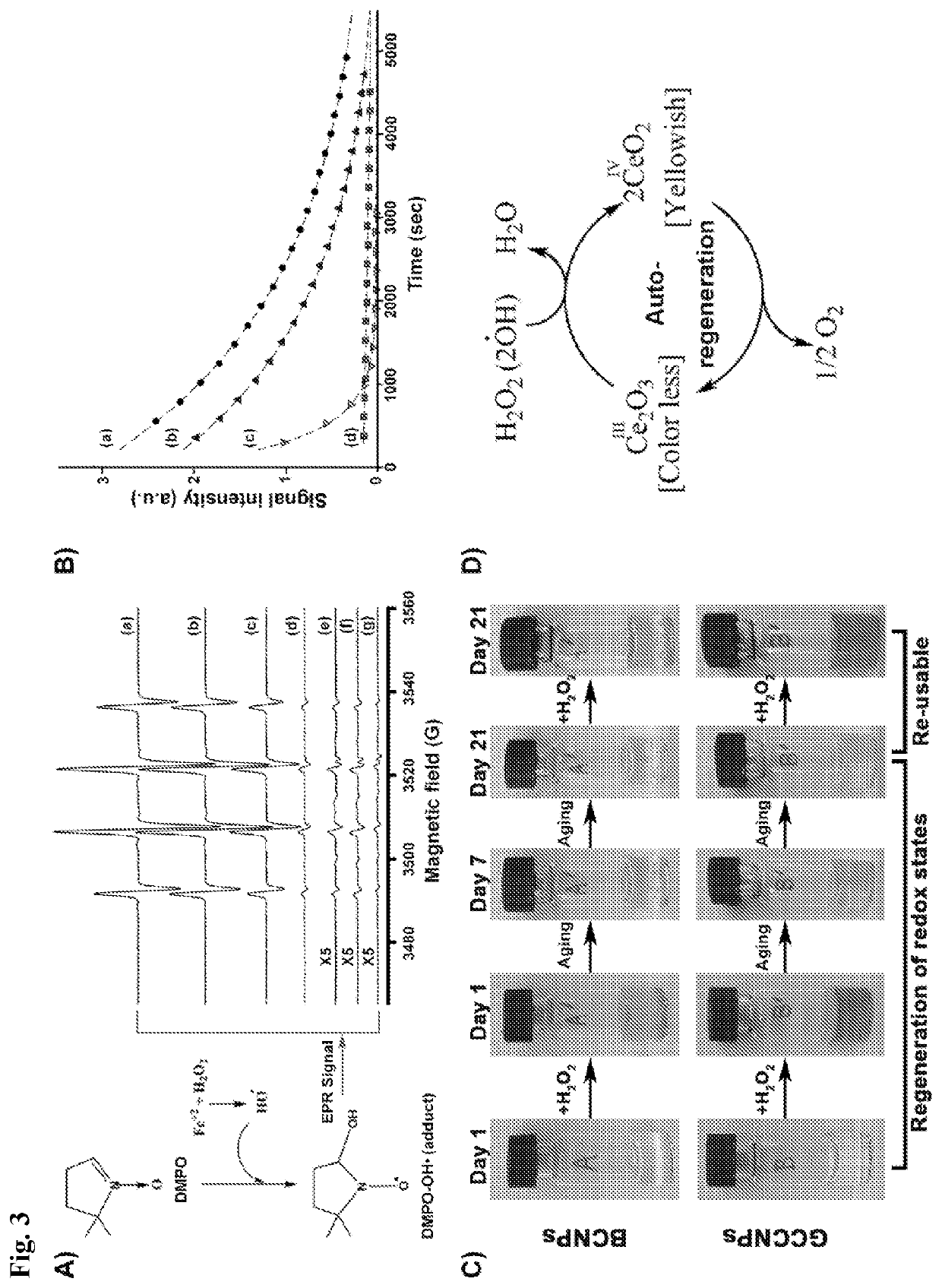Water-soluble nanoceria and methods of making and using the same
a technology of nanoceria and nanoceria, which is applied in the field of water-soluble nanoceria, can solve the problems of oxidative damage in the brain and central nervous system, and achieve the effect of decreasing reactive oxygen species and decreasing reactive oxygen species
- Summary
- Abstract
- Description
- Claims
- Application Information
AI Technical Summary
Benefits of technology
Problems solved by technology
Method used
Image
Examples
example 1
Synthesis and Physicochemical Characterizations of Ceria Nanoparticles
[0065]In this study, ceria nanoparticles were prepared using a NH4OH precipitation method and coated with GC (FIG. 1A). The 0.25 g of glycol chitosan (Sigma-Aldrich, USA) was first dissolved in 15 ml of warm water (˜70° C.) under constant stirring for 1-2 hrs. in glass vial. The glycol chitosan solution was then stirred again at room temperature (20° C.) for another 1 hr. 0.67M (0.25 g in 1 ml of water) cerium (III) chloride heptahydrate was added dropwise to the clear glycol chitosan solution under constant stirring at 5000 rpm and room temperature to form a reaction mixture A. After 15-20 minutes of constant stirring, 1.5 ml of 28.0-30.0% ammonium hydroxide (Sigma-Aldrich, USA) was dropwise added to the reaction mixture A to form reaction mixture B, which was left stirring for another 12 hrs at room temperature. The color of the reaction mixture B turned to light yellowish on next day. This mixture B was then st...
example 2
[0161]A 0.2 ml solution of 0.7 M CeCl3, 7H2O (Sigma, 99%) was added to 2.5 ml of 2% (w / v) of glycol chitosan (Sigma, degree of polymerization ≥400) solution under constant stirring at room temperature for 10 min. 0.1 ml of concentrated ammonium hydroxide (Sigma, 28-30%) was slowly added to the mixture. After complete addition of the ammonium hydroxide, an equal volume of water was added to the solution mixture and stirred for 24 hrs at room temperature. The color of the solution changed from colorless to yellow the next day, indicating the formation of nanoceria particles stabilized with GC. Thereafter, solution was centrifuged at 14K rpm for 20 min at room temperature to precipitate out any aggregation. The supernatant was collected to avoid any traces of aggregation. This supernatant was then dialyzed using slide-A-lyzer dialysis cassettes (Thermo Fisher Scientific, 10 kDa MWCO cut off) for 2 days at room temperature against nanopure water. After dialysis, the solution was neutral...
example 3
[0163]We have developed glycol chitosan-coated cerium nanoparticles (GCCNPs) that are water soluble. We have demonstrated that these GCCNPs serve as an auto-generative antioxidant to attenuate pathological damages in models of age-related macular degeneration. GCCNPs belong to the family of cerium oxide nanoparticles (CNPs).
[0164]Data from long-term (4 cycle) auto-regenerative redox activity and reactive free radical generating capacity (at pH 6.5) of GCCNPs (FIGS. 10A and 10B) is provided herein. For the auto-regenerative redox activity experiment, water was used as media for the NPs and GCCNPs, and H2O2 addition induces ROS in the medium.
[0165]The pH-responsiveness is one of the most attractive and frequently applied stimuli to treat tumor conditions. It was observed that the tumor extracellular environment is more acidic (pH=6.5) than the normal and blood (pH=7.4). In addition, the pH of endosomes and lysosomes is also lower (pH=5.0-5.5). Based on this phenomena and naturally att...
PUM
| Property | Measurement | Unit |
|---|---|---|
| diameter | aaaaa | aaaaa |
| hydrodynamic diameter | aaaaa | aaaaa |
| size | aaaaa | aaaaa |
Abstract
Description
Claims
Application Information
 Login to View More
Login to View More - R&D Engineer
- R&D Manager
- IP Professional
- Industry Leading Data Capabilities
- Powerful AI technology
- Patent DNA Extraction
Browse by: Latest US Patents, China's latest patents, Technical Efficacy Thesaurus, Application Domain, Technology Topic, Popular Technical Reports.
© 2024 PatSnap. All rights reserved.Legal|Privacy policy|Modern Slavery Act Transparency Statement|Sitemap|About US| Contact US: help@patsnap.com










